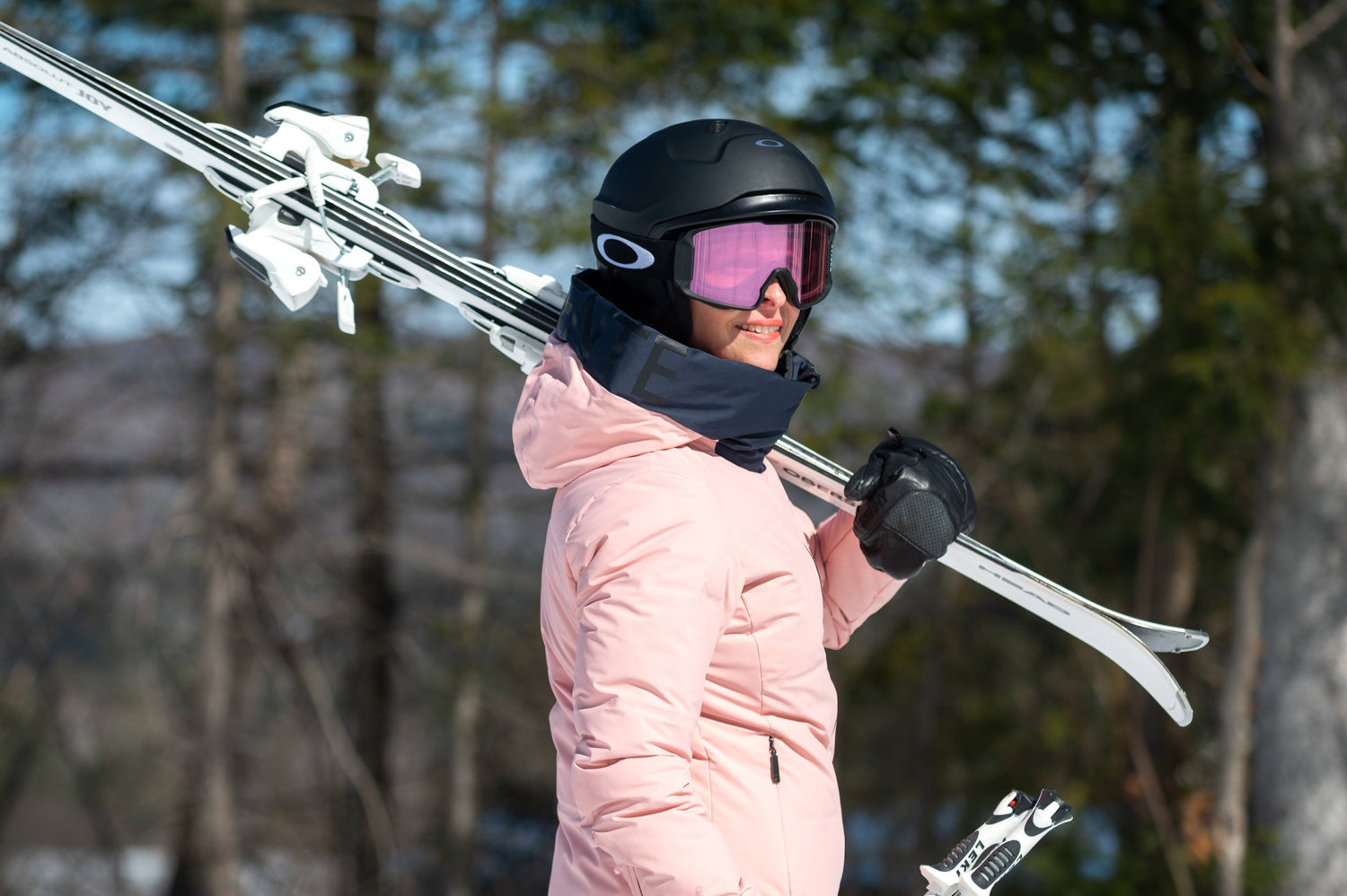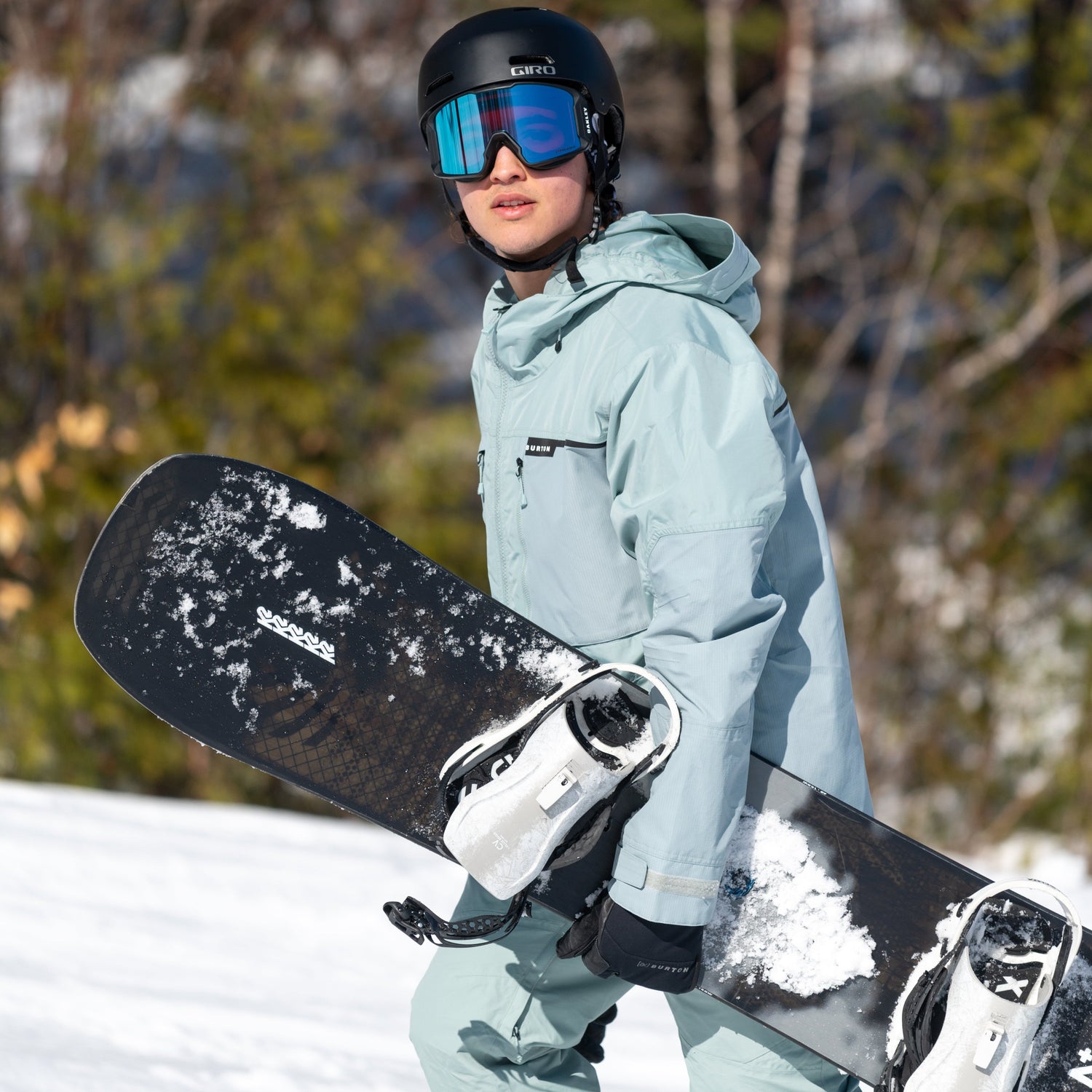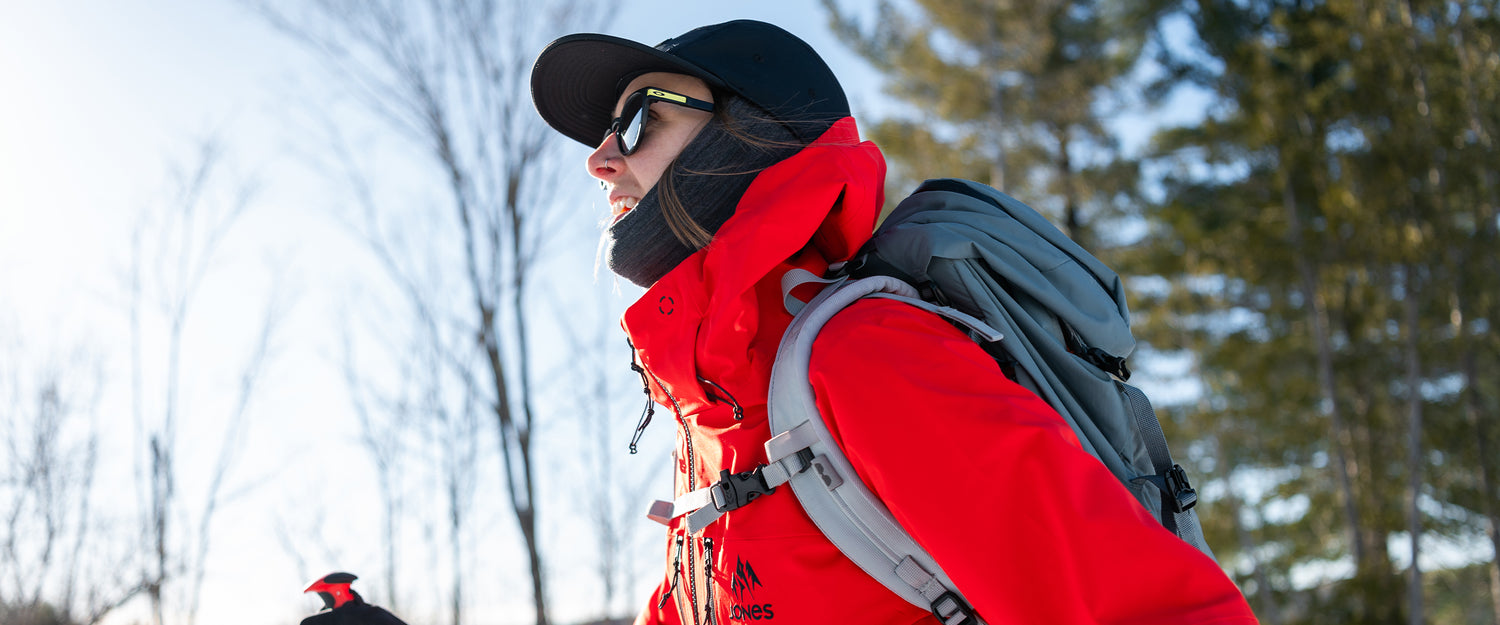What is the difference between an alpine touring backpack and a hiking backpack?
For your first ski or splitboard outings in the backcountry, a hiking backpack that you already own will work fine. However, if you continue ski touring, you’ll quickly notice that it doesn’t fully meet your needs. A hiking pack isn’t designed the same way as an alpine touring backpack. It doesn’t have the same features, such as a helmet carrier and a compartment for ski goggles, so it’s less practical in the long run.
Shop Our Alpine Touring Backpacks

What should you put in a ski touring backpack?
A backpack is an integral part of your touring gear. You’ll use it to carry your extra layers, gloves, mittens and accessories. Plus, it will hold your snacks and water. Remember that at times you’ll store your climbing skins in it and that they take up a certain amount of space. This is an important point to consider when choosing the bag’s volume. Here’s a list of essentials to carry in a touring backpack:
-
Extra mid layer
-
Extra mittens and gloves
-
Extra beanie
-
Water bottle
-
Snacks
-
First aid kit
-
Ski straps
-
Duct tape
-
Functional headlamp
-
Sunscreen
-
Handkerchiefs
-
Hand and foot warmers
-
Multi-tools and spare screws for splitboards

What size should your backcountry backpack be?
20 to 25 litres
A ski touring backpack should hold no less than 20 litres. A bag that’s too small leaves little room for extra layers and accessories or water and snacks. The 20- to 25-litre backpacks are perfect for short outings or when touring at a ski resort with a chalet and a water source for refills.
30 to 40 litres
The 30-litre backpack is essential for day outings in backcountry areas. Its larger volume enables storing extra layers, enough water, safety equipment and avalanche safety gear if necessary. Bags over 40 litres offer more storage space and can sometimes be preferable to 30-litre packs. They ensure that your equipment and clothing aren’t crammed into the bag—especially not into your avalanche safety gear. The contents shouldn’t be so jammed in that they pop out of the bag as soon as you pull the zipper!
50 litres and up
Sizes above 50 litres are recommended for multi-day adventures in a hut or winter camping. Packs above 50 litres can hold a lot of gear, such as a sleeping bag, a tent and clothes.

What features should a ski touring backpack have?
Shoulder straps and a hip belt
Your backpack will often be loaded or even outright heavy. Shoulder straps are a critical aspect for your comfort. They should be well padded and provide good support. In addition, the hip belt plays a crucial role in support. A padded, stiffer hip belt provides more support and long-lasting comfort. Thinner straps will keep the bag in place but won’t provide support when the pack is heavy.
Some hip belt models feature zip pockets. They’re a very appealing feature: you can slip some snacks into them for easily access when you’re on the go.
Pockets and compartments
A ski touring backpack should be practical. In addition to its main compartment, a pocket to store ski goggles and small accessories is essential. In addition, if you’ll use it for backcountry adventures in the high mountains, the pack should feature an easy-access pocket (and one that’s large enough) to store AND properly organize avalanche safety gear.
The pack should also have several other zip pockets to store extra snacks, basic first aid equipment, and a few other small essentials.
Helmet carrier
Since you don’t ascend with a ski helmet on your head, the helmet carrier is definitely a must-have on a touring backpack! When simply attached to the bag without a net (aka hammock), your helmet can fill with snow and be damp when put back on your head. If the backpack doesn’t have one, it can be purchased separately, but make sure the pack has the specific strategic points for attaching one.

Straps for carrying skis and snowboards
For some enthusiasts, the coveted peaks may have sections that need to be travelled on foot without skis or a splitboard. The straps are located on the sides of the pack to attach skis or both parts of the splitboard. In addition, straps on the back of the pack allow you to carry a snowboard for those who ascend on snowshoes or to slide in a splitboard when you’ve put it back together in one piece.
The straps can also be used to attach splitboarders’ telescopic ski poles during descents.
Access from the top and the back panel
Touring packs are sometimes designed to allow you to pack items either from the top or the front with a back panel. A combination of the two is also available. Here, it’s a matter of preference, since one isn’t better than the other.

How to figure out your ski touring backpack size?
Choosing the size of a touring backpack is a crucial step. To figure out which one suits your body type, make sure to measure the length of your back.
-
Locate the most prominent vertebra on your upper back.
-
Locate the tip of your hip bones (on the iliac crest), and move horizontally to the middle of your spine: that’s your lower measuring point.
-
Measure the distance between the two points—from the top to the bottom of your back—to figure out the length of your back.
-
Use the size guide of the desired brand to find out the size for you.

Men’s and Women’s Backpacks
Many brands offer models specifically for women or men because of the genders’ different body shapes to ensure optimal comfort.
How do backpacks with airbags work?
Ski touring backpacks with airbags were created to lower the risk of being buried in an avalanche. Inflating the balloon increases the skier’s volume and buoyancy so that he or she stays on top of avalanche debris.
This type of backpack features an inflatable balloon that can be triggered by pulling a handle that’s usually located on one of the shoulder straps. Gas cartridges or an electric fan inflate the balloon.
These backpacks can sometimes save lives. If you venture into the high mountains, this type of touring backpack can be a good way to round out your avalanche safety gear.
A ski touring backpack will definitely be your best companion for your outings. Ideally, try out a number of them and compare various models to find the one that works best for you.



